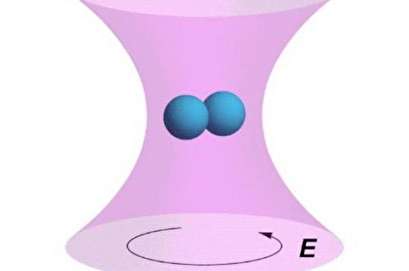TEHRAN, July 22 -The creators of the world's fastest manmade rotor believe their invention will boost the study of quantum mechanism, the branch of physic devoted to the behavior of subatomic particles.
 TEHRAN, Young Journalists Club (YJC) -The creators of the world's fastest manmade rotor believe their invention will boost the study of quantum mechanism, the branch of physic devoted to the behavior of subatomic particles.
TEHRAN, Young Journalists Club (YJC) -The creators of the world's fastest manmade rotor believe their invention will boost the study of quantum mechanism, the branch of physic devoted to the behavior of subatomic particles.
The new rotor can spin at a rate of 60 billion revolutions per minute. Most airplane turbines top out at 3,000 revolutions per minute.
Scientists described their impressive new device this week in the journal Physical Review Letters.
"This study has many applications, including material science," Tongcang Li, an assistant professor of physics and astronomy at Purdue University, said in a news release. "We can study the extreme conditions different materials can survive in."
The rotor is composed of a tiny silica dumbbell. Scientists used a laser to levitate the dumbbell inside a vacuum. The shape spin of the laser light determines whether the dumbbell vibrates or spins. The device works like two instruments in one.
When the laser light is circularly polarized and the dumbbell spins, the device functions as a rotor, and when the laser is pulsed and the dumbbell vibrates, the device works as a torsion balance, a small instrument capable of measure small forces and torques.
Scientists have previously used torsion balance devices to study gravity and measure the density of Earth. Researchers believe the new device will help them analyze vacuum friction and better understand quantum physics.
"People say that there is nothing in vacuum, but in physics, we know it's not really empty," Li said. "There are a lot of virtual particles which may stay for a short time and then disappear. We want to figure out what's really going on there, and that's why we want to make the most sensitive torsion balance."
Another team of scientists used a similar approach to spin a tiny particles at 60 billion revolutions per minute. They described their paper in the same journal. Though the Swiss scientists also believe the technology could aid a variety of scientific endeavors, they were originally just motivated by curiosity and pride.
"To be honest," Rene Reimann, researcher at the Swiss Federal Institute of Technology, said in a news release. "It was just super cool to have the world's fastest rotating mechanical object directly in front of us."
Source:UPI
 TEHRAN,
TEHRAN,